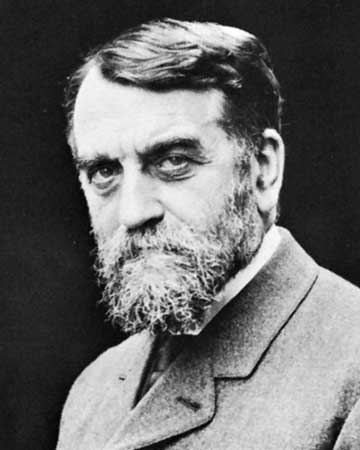Paul Vidal de la Blache
From Geography
Contents |
Background
Paul Vidal de la Blanche is a French geographer who was born in 1845 in Pezenas and died in 1918. He traveled a lot and was highly interested in the geographical situation of the Elzas and Lotharingen. His thorough knowledge about this specific region ensured that he published ‘La France de L’ Est’ in 1871. In 1898 he was appointed professor at the University of Sorbonne where he lectured until his death.
Key contributions
Geographers at that time were occupied with the diverse forms of adaptations to the world. The focus of the geographers was mainly on issues of demography. Differences in environment didn’t answer question on why population numbers would vary from place to place. Next to differences in environment Paul introduced two other resource statements, the social factor and the mobility factor. He focused specifically on the social factor or better said the relation between people en environment. His approach mainly challenged environmental determinism.
Another central concept that he used is genre de vie. This concept includes the set of techniques, traditions, social organization, values and standards necessary to acquire an existence in a given area. The social system created by a group of people are closely related to the methods that are developed to adapt and cultivate the environment.
Geografie humaine is yet another concept that came to be associated with him and his school of French researchers during the first two or three decades of the 20th century (Cloke,Philo,Sadler, 1991,pp.64).
Vidal de la Blanche spoke and reflected on the possibilities that environments offers. This implies that the physical environment is passive and the active agent is at liberty to choose between a wide range of possibilities. Choice is central. In his 'Principles of Human Geography' (1926) Paul insisted on seeing in nature margins for work of transformation rather than definite, rigid boundaries on human activities (Cloke,Philo,Sadler, 1991,pp.64).
References
Cloke, Paul.,Philo, Chris.,Sadler, David. (eds.) (1991), Approaching Human Geography, Guilford Press, London, UK.
http://www.travel-university.org/general/geography/history/determinism-possibilism.html Retrieved October 20, 2010.
Paul Vidal de La Blache. (2010). In Encyclopædia Britannica. Retrieved October 20, 2010, from Encyclopædia Britannica Online: http://www.britannica.com/EBchecked/topic/627886/Paul-Vidal-de-la-Blache
Contributors
- "page created by Ingram Smit (s4091841) & Henkjan van Maanen (s4069048)"
- "page enhanced by Kolar Aparna" --Kolaraparna 11:00, 10 September 2011 (UTC)
